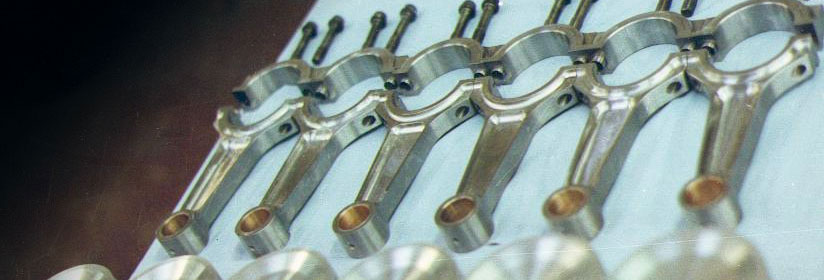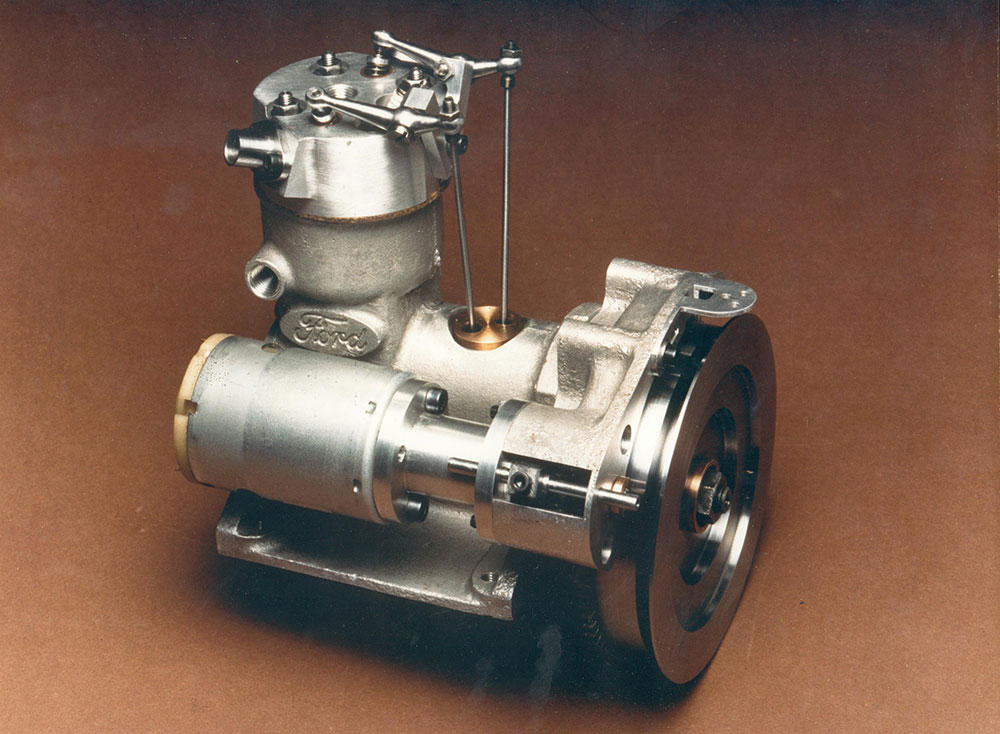Engine Development

We have 45 years experience of nearly every facet of engine development.
There are several stages to a development programme, depending on the start point and the desired finish point.
With a brand new prototype, fresh off the drawing board, just been built, never been run before, engine,
- Phase 1 is to install it on the dynamometer, get it to start, run it in gently for 4-5 hours, put right all the obvious faults ( leaks, oil pressure, misfiring, fuel flow etc.).
- Phase 2 is to run the engine at progressively higher power levels throughout the rev range, making adjustments to the fuel and ignition system to maintain conservative settings which are within safety limits. Fill in a test sheet, observe the results and compare them with the expected performance. Note any apparent mechanical defects. If these are detected and considered serious enough to stop the test, proceed to Phase 3. Otherwise, continue power runs, adjusting fuel and ignition settings until these are optimised, within the constraints of the equipment. Finally run the engine at full power through the rev range.
- Phase 3 is to assess the results of the test in Phase 2. Then remove the engine from the test bed, strip it down completely, examine all the components and write an inspection report, for future use. There are likely to be some components which show signs of distress. Work out the reason for this in each and every case, and devise a remedy – preferably permanent, but if only temporary make a note to that effect. Raise a drawing modification and manufacture the relevant new parts. Carry out any modifications to existing parts which are deemed necessary. Record these on the modification sheet. Rebuild the engine to the new specification, recording all dimensions on the engine build sheet. Start again at Phase 1.
- Phase 4 is to continue Phase 1 through Phase 3 until completely satisfied with the result.
EXAMPLES
FORD MILEAGE MARATHON ENGINE
Designed and manufactured at Bonner Works, 5 new engines, 15cc, single cylinder, 4 stroke, water cooled, hemi head combustion chamber, twin plug, fuel injected, electric starter, for Ford Motor Co.
Purpose: to take the world MPG record. The engine was run slightly differently to Phases 1-3. Mechanical failures were fairly low. The attention was focused on minimum fuel divided by maximum power to give the best possible specific fuel consumption. This was a quintessential research and development programme. We were pushing the boundaries of combustion efficiency into unknown territory. Every conceivable idea was tried, evaluated, recorded. For days we would get nowhere, and then make a breakthrough and move onto another plane. The Ford engineers were with us one or two days every week. We all talked endlessly about what was happening and what we could do to make it happen better.


Ford Mileage Marathon engine, designed, manufactured and developed by Bonner Engineering. 15cc overhead valve hemi head, water cooled, fule injected 0.7 bhp. The engine achieved the World Record of 3804 mpg.
The engines were hand-built to very tight tolerances of a few microns, and after weeks on test an engine would not produce the earlier results. Fortunately, Ford had the foresight to order 5 units, so we would remove that engine for overhaul in the workshop and fit a fresh one to the test bed. We were back to producing good results and experimenting with new ideas, with no delay. The development programme continued day in day out for 8 months, at the end of which the engine, installed in the Ford car and driven by a petite Ford secretary, smashed the world record with 3802 mpg
BONNER-JAGUAR-TURBEAU V12 TURBO MARINE PROJECT
This was a hugely challenging project brought to us by Turbeau Ltd. The specification was for 800 bhp from the Jaguar 5.3 litre V12 engine in turbocharged and marinised form. On the road the engine gave about 250 bhp, for short bursts. This needed to be more than tripled for continuous running at full throttle for up to 3 hours. We had many problems: Rear main seal turning crankshaft blue, Rear bearing failing due to a) rear seal : hot crankshaft, b) fillet radius fouling bearing, c) asymmetric bearing cap, Turbo disintegration, Exhaust manifolds cracking through water jacket, Lucas mechanical fuel injection failures.
But the biggest single problem by far was Detonation at 20+ lbs/sq” boost.
Initially the current production model had a completely flat faced cylinder head, which is a recipe for bad combustion. Symptoms were: a) an unduly long ignition advance; b) high exhaust gas temperature, around 1000 deg C; c) failure through burnt out pistons which is itself a symptom of detonation. All of the above are a symptom of bad combustion, which is itself a symptom of a bad combustion chamber.
( Jaguar Cars were sponsoring Turbeau who were running a powerboat team, and as a result we had a generous supply of new engines, spares and free access to their engineering hierarchy, with whom we had a cordial relationship.)
Jaguars came to the rescue with a new cylinder head, to counter the atrocious fuel consumption of the XJS*: the May head.
* Further symptom of bad combustion.
They sent down two pairs of pre-production heads to try out. The initial results were as follows: we had lost 200bhp, down from 800 to 600, and instead of burning out pistons, we now burnt out the heads. Jaguars came to the rescue again and offered Bonner Engineering a sizeable budget to solve the problem.
We then revisited the May head and redesigned the combustion chamber so that it had a reason why it should work, subject to testing it. Furthermore, our proposals could be machined out of what was now about to be a production head. We were also able to include excellent port and airflow characteristics. We called it the May-B head.
We produced a pair of cylinder heads accordingly, built them into an engine, and ran a test on the dynamometer.
The power was back at 8oo bhp, ignition advance back to 36 deg, fuel consumption .58 pts/hp.hr, the engine was smooth as silk and detonation a thing of the past. No more burnt pistons, no more burnt heads, no more burnt exhaust valves, no more burnt turbochargers. What a relief!

